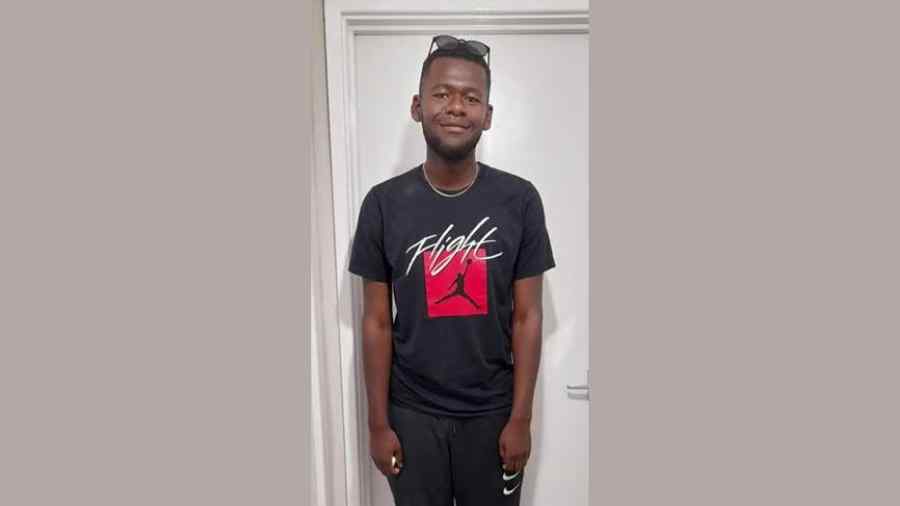Tyreece Scott: The Tragic Hounslow Murder That Shook West London

The story of Tyreece Scott is one that captured the attention of London and beyond — a tale of a young man whose life was tragically cut short by senseless violence. His murder in January 2024 in Hounslow, West London, sent shockwaves through the local community, sparking discussions about youth crime, gang culture, and the devastating effects of knife violence in the capital. The subsequent police investigation and court trial uncovered disturbing details of a callous crime that ended the life of a man described by family and friends as loyal, ambitious, and full of life.
Who Was Tyreece Scott?
Before his name became associated with tragedy, Tyreece Scott was known to his loved ones as a warm and caring individual. At just 24 years old, he had dreams, plans, and ambitions like any young man his age. Described by friends as cheerful and loyal, he had a bright presence that brought people together. Those who knew him best said he had “so much more to live for,” and his death left a deep void that words could hardly fill.
Scott was a familiar face around the Hounslow area — a place he grew up in and where he felt a strong sense of belonging. He was not a public figure or celebrity; rather, he was an ordinary young man living his life, trying to find his place in a complex world. Sadly, his life would come to an abrupt end on the streets of the very community he called home.
The Night of the Tragedy
In the early hours of 16 January 2024, Hounslow’s quiet residential streets turned into a crime scene. Police were called to Hibernia Road, where they found Tyreece suffering from a severe stab wound to his chest. Despite the best efforts of paramedics, he was pronounced dead at the scene. It was a horrifying discovery for a neighbourhood unaccustomed to such brutality.
The emergency response was swift, and the Metropolitan Police immediately launched a murder investigation. Officers began gathering CCTV footage, conducting door-to-door inquiries, and piecing together what had led to the deadly confrontation. Within hours, the incident was headline news across local outlets. Residents expressed fear and disbelief, mourning a young man’s death that felt both personal and emblematic of London’s growing struggle with knife crime.
The Investigation
The Metropolitan Police treated the case with the urgency it deserved. Detectives from the Specialist Crime Command were assigned, and soon, a clearer picture began to emerge. CCTV footage placed two men at the scene around the time of the attack.
By tracing their movements, police discovered that after the stabbing, the suspects had fled the country. However, through close cooperation with border and airport authorities, the pair — Ben Laing and Duarra Abdi — were arrested just days later at Stansted Airport, having returned from abroad. Their capture was a major breakthrough, allowing investigators to connect crucial evidence and eventually bring charges of murder.
Officers recovered items that played a central role in the case, including a Louis Vuitton designer manbag that Abdi was carrying on the night of the murder. CCTV images showed him wearing it before the crime, while later footage revealed him without it — an attempt to discard evidence. Police also found mobile phone data, including search histories that suggested the suspects were aware of and anxious about the news coverage of the stabbing.
The Trial and Convictions
The murder trial took place in early 2025 and lasted several weeks. Both Ben Laing and Duarra Abdi faced the court, accused of murdering Tyreece Scott in a deliberate and violent attack. Prosecutors described the act as “cold-blooded” and “cowardly,” arguing that the pair showed no remorse after taking an innocent life.
During the proceedings, the prosecution presented compelling evidence:
- CCTV footage showing the defendants in the area moments before and after the murder.
- Forensic evidence linking them to the crime scene.
- Mobile phone data revealing incriminating searches and communications.
- Witness testimonies corroborating their involvement.
The defence attempted to argue that the attack had not been premeditated, but the jury was unconvinced. After deliberation, both men were found guilty of murder. In addition, Abdi was convicted of possessing a bladed article, further emphasising the reckless disregard for life that defined their actions.
The judge, in his sentencing remarks, called the killing “a senseless act of violence that robbed a young man of his future and left a family in unimaginable pain.” Both Laing and Abdi were sentenced to life imprisonment, with a minimum term of 22 years before eligibility for parole.
Two other individuals — Morgan Allen and Reda Mohamed — were also convicted for perverting the course of justice, having attempted to assist the killers after the incident. They too received prison sentences, marking the end of a complex and emotionally charged trial.
The Aftermath and Community Reaction
The conviction brought some relief to Tyreece’s grieving family, but the pain of their loss remained. In emotional statements delivered outside court, relatives described Tyreece as “the heart of the family” and spoke about how his death had left them broken. His mother, in particular, expressed gratitude to the police and legal teams for ensuring that justice was done, but said that “no sentence will ever bring Tyreece back.”
In Hounslow, the community came together to remember the young man. Candlelight vigils were held, and tributes poured in across social media from friends, neighbours, and even strangers who were moved by the story. For many, the tragedy symbolised the devastating consequences of youth violence that continues to plague parts of London.
Local leaders and campaigners used the case to call for greater investment in youth programmes, education, and community safety initiatives. Schools and youth centres held workshops and discussions about conflict resolution and the dangers of knife crime, hoping to turn the heartbreak into a lesson that could prevent future losses.
The Broader Issue: Knife Crime in the UK
The murder of Tyreece Scott was not an isolated case. It became part of a grim statistic that reflects a troubling national trend. According to data from the Metropolitan Police and the Office for National Statistics, knife crime offences in England and Wales have remained alarmingly high over the past decade. In London alone, hundreds of stabbings are reported each year, many involving teenagers and young adults.
Experts have long debated the root causes of this crisis. Poverty, lack of opportunity, social inequality, and the glamorisation of gang culture all contribute to an environment where violence becomes a form of expression or survival. Communities like Hounslow, though generally peaceful, are not immune to these pressures.
The government has introduced several initiatives to tackle the issue — from stop-and-search powers to youth intervention programmes — but critics argue that the measures are often reactive rather than preventive. Campaigners stress the need for long-term investment in education, mental health support, and employment opportunities to steer young people away from crime.
The Legacy of Tyreece Scott
Every tragic story leaves behind a legacy — a reminder of what was lost and what must change. For those who knew Tyreece Scott, his memory is cherished not only as a victim but as a symbol of the urgent need for societal reflection. His death has spurred renewed conversations about justice, community, and responsibility.
Many local residents have since joined or founded organisations dedicated to preventing youth violence. In Hounslow and surrounding boroughs, memorial projects now bear his name, honouring his life and raising awareness about the impact of knife crime. Schools and community centres have used his story as an example during assemblies, encouraging young people to make better choices and look out for one another.
While the sentences handed down to his killers provide a sense of closure, the underlying issues remain. The story of Tyreece serves as a stark reminder that true justice extends beyond the courtroom — it lies in preventing future tragedies through compassion, understanding, and action.
The Human Cost of Violence
Behind every statistic is a human being. The life of Tyreece Scott illustrates that every victim of violence is more than just a headline or case number. He was a son, a friend, a neighbour, and a member of a community that will never forget him. His story echoes across London’s streets, a haunting question for society: How many more promising lives must end before the cycle of violence is broken?
For now, the people of Hounslow continue to grieve, heal, and remember. Through their efforts to keep Tyreece’s memory alive, they hope to turn their pain into purpose — to ensure that his story is not one of despair, but of change.
Conclusion
The murder of Tyreece Scott is a heartbreaking example of the growing issue of knife violence in the United Kingdom. His death reflects the urgent need for community action, preventive education, and stronger support systems for vulnerable youth. While justice has been served through the conviction of his killers, the true test lies in society’s ability to learn from this tragedy and ensure no other family endures such pain.
Tyreece’s story reminds us that behind every act of violence is a ripple of loss that touches families, communities, and generations. His name, now etched into the memory of Hounslow, will forever stand as both a warning and a call for change.



